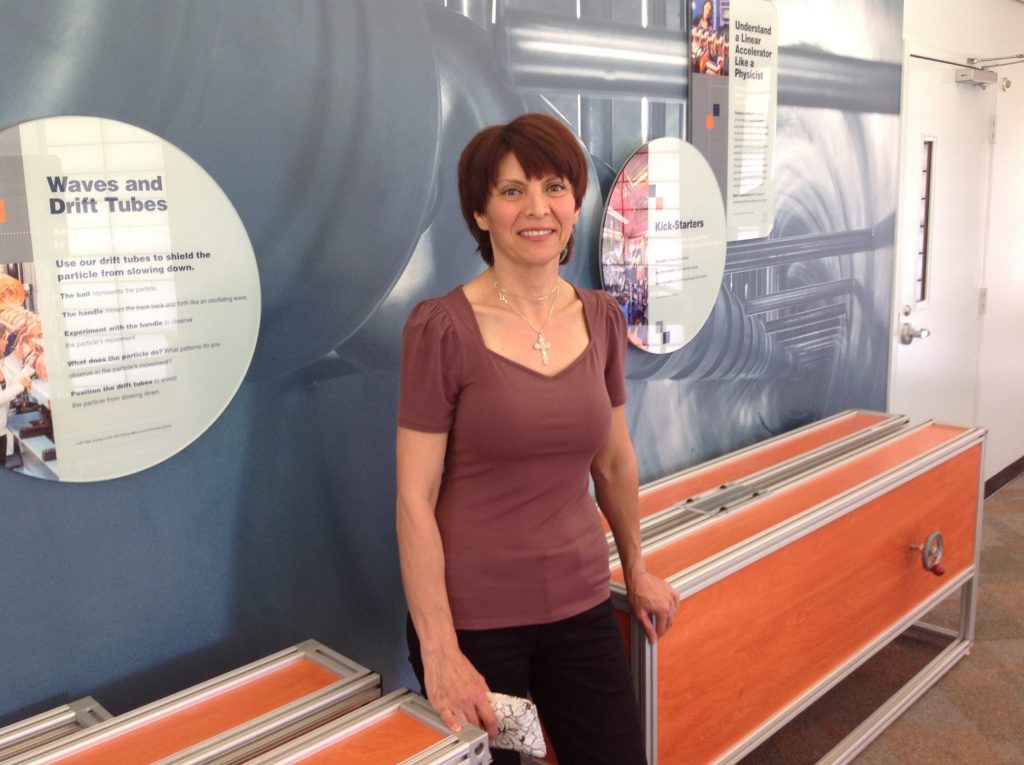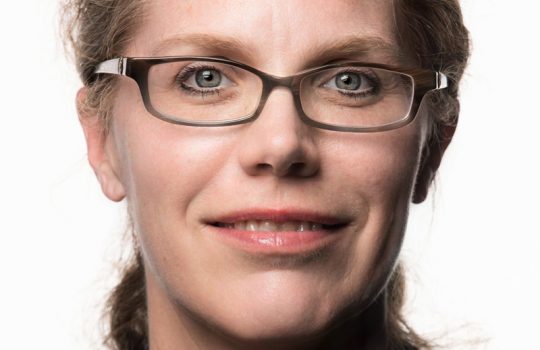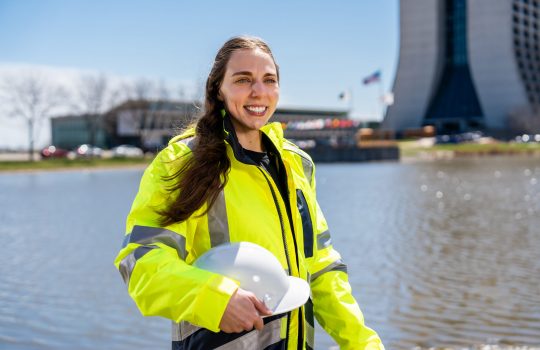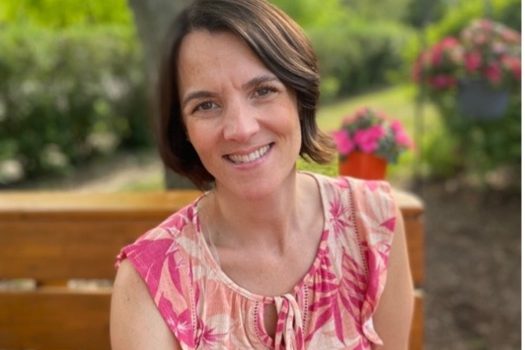How did you end up at Fermilab?
I’m from Georgia — a beautiful country in Eastern Europe, in the Caucasus Mountains. My husband, Guram Chlachidze, who also works at Fermilab, and I moved to the U.S. about 18 years ago. We were particle physicists, and my husband was invited as a guest scientist at Fermilab.
It was a difficult time in Georgia. It was the time after the Soviet Union was broken up, and the country was fighting for its independence. So, for us to receive this invitation for Guram to work at Fermilab was just super exciting.
What was it like when you arrived at Fermilab?
When we arrived in the U.S., my husband started working at Fermilab, and our daughter was born quite soon after, within a few months. I put my career on hold and adjusted to my new life.
I was a new mom in a new country, everything new. I spent about three years as a stay-at-home mom. Even though it was so challenging and so difficult, the people around were just super nice, and this was what gave me strength to stay in the U.S. and start our new life here.
We are citizens now. Even though we visit Georgia every year in the summer to see our parents, family and friends, we feel at home here. Fermilab is our home, and the U.S. is our country.

Ketevan Akhobadze stands beside exhibits that explain concepts behind particle accelerator technology.
What is your role at Fermilab?
I am in charge of Lederman Science Center exhibit development, upgrade, operations and maintenance. These exhibits are about particle physics, developed for middle school students and the general public.
The challenge and excitement of this job is that you get to create a hands-on activity that communicates the complicated ideas of particle physics and makes them accessible and understandable for someone without any background in physics.
The work we are doing with these exhibits is trying to make a bridge between Fermilab science and the public — get people excited about particle physics.
Of course, we don’t expect to teach them physics in a few hours. That’s impossible. But we are hopeful that these exhibits will kick-start their interest in Fermilab science and STEM in general. This is what gives me motivation and makes me excited about my job.
What is your favorite part of your job?
Coming up with a new exhibit — brainstorming ideas about it and putting it together in my mind. Then I share it with the exhibit committee, and I get my colleagues’ feedback on it. We put together a prototype and, if everything works well, we build a new exhibit.
In the last five years, we’ve built and upgraded many exhibits; one of them is about gravitational lensing. I came up with this idea, and my friends liked it, so we put together a prototype. Then, I literally built it in my garage.
Currently, I’m working on a new exhibit about neutrino mass. This is a very challenging exhibit to put together because we know very little about neutrino masses — we only know upper limits for them.
Scientists don’t know at this point exactly what the three neutrino masses are. The exhibit will introduce our visitors to the mass scale of subatomic particles — where different particles fit on that scale and how Fermilab scientists use underground neutrino experiments to explore the neutrino mass mystery.
What do you like to do when you’re not at work?
Traveling is probably most fun for me beyond my work. We go to Georgia to see our family, and we usually stop somewhere in Europe to see places. This is something that really makes me happy.
I love remodeling at home, I change colors, relocate furniture; my husband doesn’t like this, but I do it anyway. I also love cooking and baking for my family.



